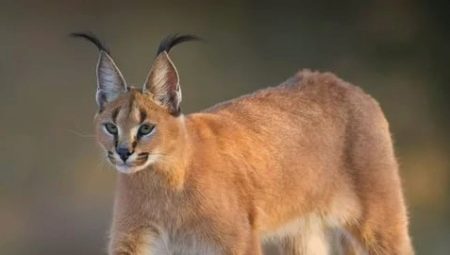There are many animals that can be raised at home. Caracals stand out among them. It is useful to know what this species looks like and what it is.
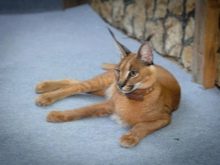
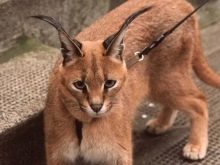
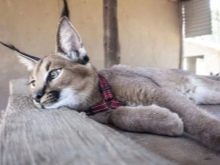
Description
Caracal is considered by many people as a wild animal. But in the same way, you can consider him a completely domestic creature. This species is easy to take root both in nature and at home.. However, the number of owners of such dangerous pets is still small.
People did not have to specifically breed cats, since all the “work”, so to speak, was done by nature itself. Caracal populated vast African and Asian lands, preferring areas where the forest intersects the steppe. They can also be seen in the Caspian coast. In arid lands (in deserts) caracals do not occur.
The vast areas of the steppe are much more to their taste. On the plains, their coloring produces a masking effect. Caracal calmly gets along with the serval, but at the same time it often comes into conflict with the cheetah. This representative of the feline family, like other species of this group, is a predator. Typical night activity for him.

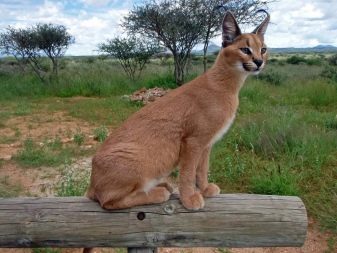
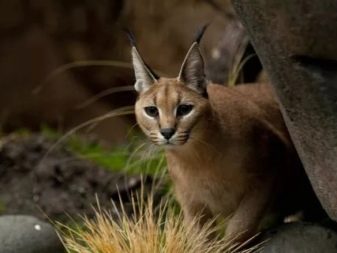
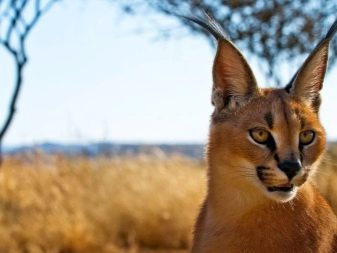
The animal is able to move through the trees without any problems. It also swims pretty well and swiftly moves on the ground. Caracal sometimes jumps more than 4 m in length. This helps him to effectively hunt for a variety of prey. The predator poses a great threat not only to wild herbivores, but also to livestock.
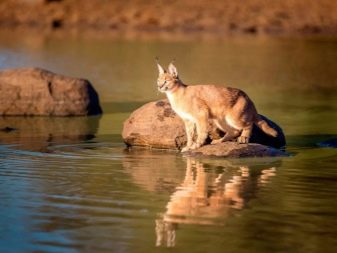

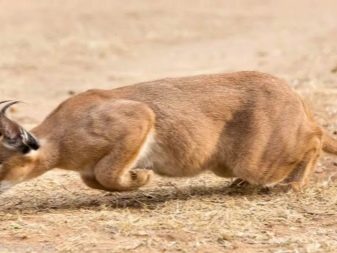
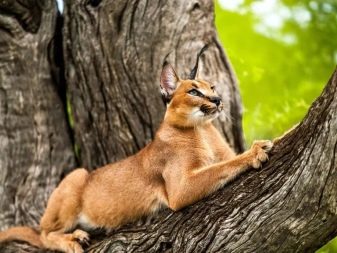
The natural response from the people was a massive hunt for animals. She led to the almost complete disappearance of the wild cat.But the situation has changed thanks to the organization of reserves, where the caracal can feel safe. In addition, the domestication of this beast even made it possible to slightly increase its population. At home, the animal lives quietly and under certain conditions is not dangerous.
Bring kittens to the house does not make sense. In this case, the predator habits are invariably preserved. But the character will be very different from the habits of a domestic cat. It makes sense to look for caracals only in specialized nurseries.
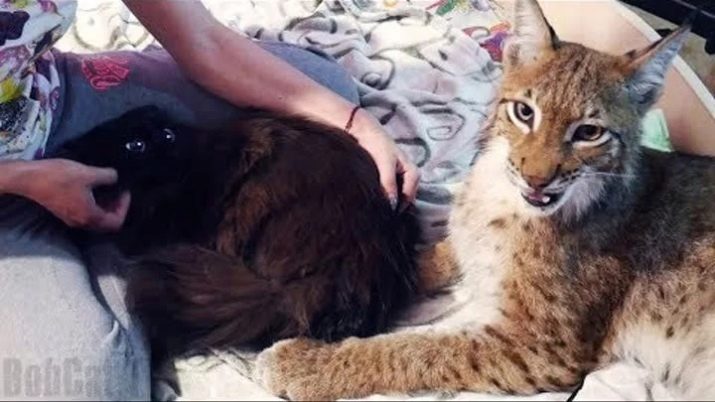
The name of the species comes from the Turkic languages. It translates literally as "black ears." And in fact, this is a typical trait of caracals. The ears are not just black - they are crowned with sharp tips and tassels. The animal usually weighs from 15 to 20 kg, but occasionally the mass reaches 25 kg.
The appearance of caracals can be described as follows:
- the head is small;
- the muzzle is directed forward, covered with white and dark spots;
- high landing of big ears;
- almond-shaped, slightly yellow eyes, along which a black stripe passes;
- powerful, well-developed body;
- body length is from 0.65 to 0.85 m;
- animal height - 0.5 m;
- slender, moderately long legs;
- rather long tail;
- the structure of the ears is similar to the tassels;
- the animal has a brown color, close to sand tone.
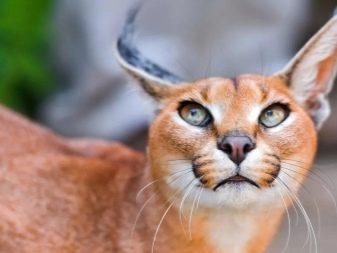
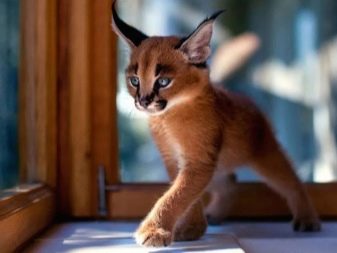
According to genetic characteristics, caracal (steppe lynx) clearly stands out in one species. If we proceed from the main external signs, then the animal is closer to cougars, lynxes and African serval. Compared with ordinary lynxes, it is smaller and has a uniform color. Paws of the predator are covered with rather stiff bristles, which allow you to easily move around the sand and other surfaces.
In the wild you can see caracal melanists. A feature of such specimens is a darker color. The fur is not too long, but very thick. Its color is approximately the same as that of cougars from North America: the coat is sandy or reddish-brown on the top, and it is painted white below.
On the side on the face of the caracal it is easy to notice black areas. The ear brushes and the outer side of the auricles are painted in the same color.
Such a coloring makes all individuals inconspicuous against the background of dunes. In the summer, molting occurs, while the fur brightens, but its density and density do not decrease.
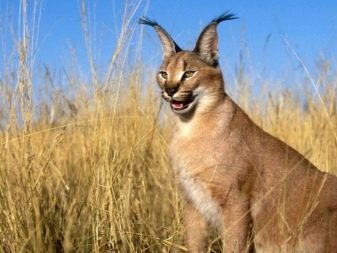
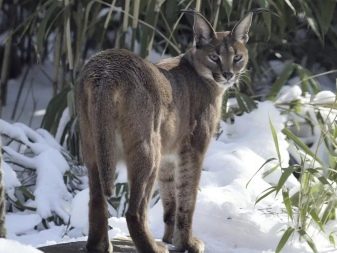
Caracal can be seen not only in the savannah, but also in the foothills. The main part of predators populated:
- Africa
- Saudi Arabia;
- Asia Minor;
- Near East.
Much less of them live in the south of Turkmenistan, on the Mangyshlak peninsula. The easternmost parts of the range are Kyrgyzstan and the vicinity of Bukhara. Separate specimens live even in the foothills and deserts of Dagestan. Despite the lack of habit of desert conditions, Steppe Lynx can survive the drought without any problems. The animal goes without drinking for a very long time.

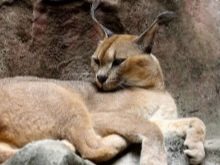

In the afternoon, when the heat reaches a peak, caracals go into dense thickets - there the temperature is not felt so much. Like other cats, the species is formed by loners. Individual hunting zones caracal guards strictly. The size of such zones can reach 300 km.
Their minimum area is 4 square meters. km The predator has excellent eyesight and excellent hearing. He needs this in order to hunt more efficiently. Noticing the potential prey, the cat almost immediately rushes to the attack. Paws of caracals are well developed.
But they cannot chase a victim for a long period of time. For this reason, an ambush attack predominates. Potential victims are very diverse: a steppe cat attacks hares and birds, monkeys and porcupines, small antelopes and mongooses. Sometimes she gets for her lunch hedgehogs, rodents, reptiles and foxes.
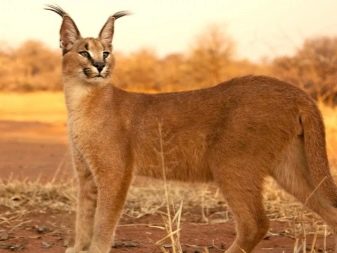
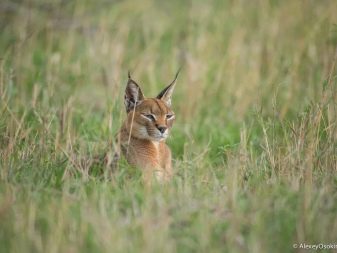
An adult animal can cope with victims twice as large as itself. Caracal exterminates small prey with a crushing bite. If the attacked individual is larger than the predator, strangulation tactics are used.
With an excess of food, caracal will make stocks.Later, he will finish them if he encounters, for example, difficulties in hunting.

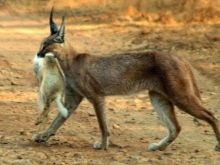

Although caracal and predator, but other animals hunt for it. First of all, these are hyenas and lions. Dense thickets become salvation for the steppe lynx.
Steppe wolves can also be dangerous. When a caracal attacks sheep flocks, it can be attacked, in turn, by a guard dog - an alabai.

Hunting for this species in the CIS is strictly prohibited. In the past, he himself was used for hunting. For the price, this method of fishing was quite affordable for most people. But now the situation has fundamentally changed, because now it is, rather, an elitist animal.
Caracal accumulates its food reserves on tall trees. There, this prey is almost inaccessible to other animals.
Reproduction takes place all year. There is a gap of about 6 months between birth and the transition to independent hunting. Interestingly, the color of the coat may vary slightly depending on the habitat.
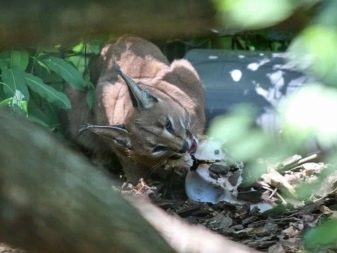
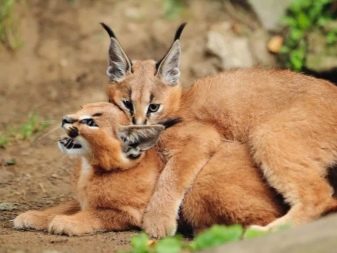
Character Features
For a cat like caracal, courage is typical, as well as a craving for freedom. But after the domestication of the animal, it was possible to develop in him the desire to become attached to a person. Individuals grown in nurseries are distinguished by devotion. Oddly enough, the nature of caracals is closer not to feline, but to canine species. The view is quite large and very active.
In a small apartment it is impossible to keep the beast, and it makes sense to start it only in large country cottages or in aviaries. The habits of a predator make it dangerous for preschoolers. Caracal can be trusted only by teenagers, but better by adults. From the very beginning, business should be conducted in such a way that the caracal learned several prohibitions.
Among them:
- biting shoes and wiring;
- sitting on tables, chairs and armchairs;
- eating food laid in the host plates.
Caracal must immediately obey any additional orders and restrictions.
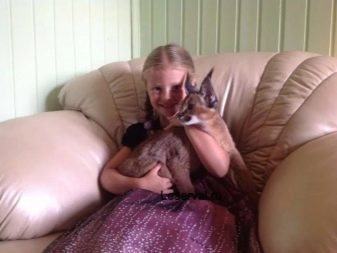
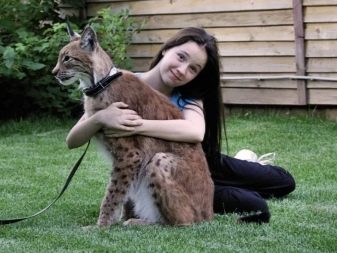
You cannot beat a cat. However, one should definitely deal with it strictly. Small cubs can suffer from toxic plants, household chemicals. It is dangerous to wind electric cords and ropes around the neck, stringing packages on the head. It is necessary to constantly protect animals from contacts with these objects, but it is better to completely remove dangerous things from sight.
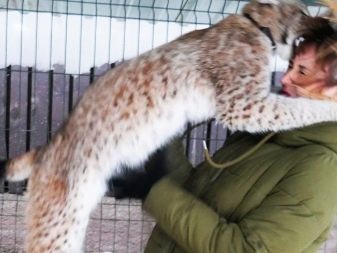

How to choose?
Caracal cubs cannot be found in bird markets. It is unlikely that you can buy it on the Internet. Animal sales announcements represent either fraud or the sale of overtly dubious individuals. It is advisable to contact professional breeders or in highly specialized nurseries. But it is better to take the animal in nurseries of a home type.
Aviary content does not fit well - only with continuous contact with people from the first hours of life a kitten can grow up manually, but this is not guaranteed. For this reason, it is recommended to find out the reputation of the nursery and individual specialists in advance. There is no point in acquiring an animal older than six months, otherwise it will not be able to adapt to the changing environment.
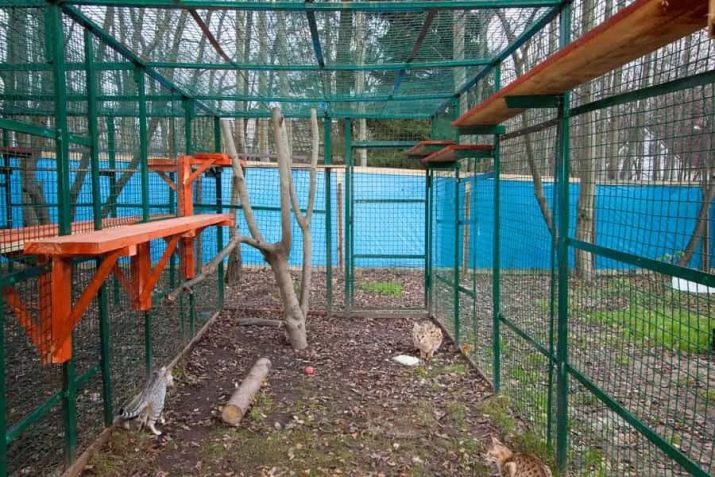
Of course, you cannot buy caracals from resellers and from those who do not provide the necessary package of documents. From the very beginning, you should decide what the animal is for: as a pet or for the purpose of independent breeding. This invariably affects the price. In addition, it is advisable to castrate or sterilize predators purchased not for breeding at the age of 3 to 5 months, otherwise the individual will be aggressive and begin to mark the territory everywhere. Even worse, if the animal starts to run away.
The cost of small caracals in serious nurseries can not be less than 8 thousand dollars. Given the additional costs and the steady increase in the cost of keeping animals, you will have to plan at least another 25% of this amount. At the same time, specimens intended for breeding will be somewhat more expensive.
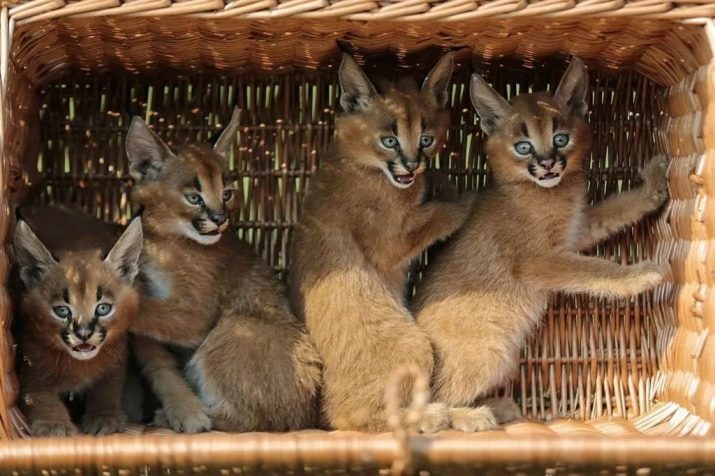
Content
As already mentioned, it is almost inexpedient to maintain caracal in an apartment in the city.But if the animal is grown correctly and raised in love and care, then it will be distinguished by good nature and a playful disposition. Caracal is energetic, characterized by curiosity and a high intellectual level. Usually the animal shows an even, good attitude to all members of the family. An adult predator makes contact with any of them without any problems.
His attitude to strangers is much more restrained. Sometimes the beast acts even aggressively.



Caracal is peculiar to attachment to owners. But only one person will obey the animal without talking. It is important to know that even a small domesticated individual should not be perceived as an analogue of a domestic cat.
Despite the lightness and high speed of taming, the caracal will always behave differently from an ordinary pet. Yes, he will rejoice when they scratch his ear. But this is the maximum you can count on. In the first 2 years, the desert lynx experiences many psychological problems. For him it is an analogue of human adolescence.
Caracal can be kept at home, but only with great care - it poses a potential threat to the owners and surrounding people. You have to spend a lot of time on educational work. It is advisable to even turn to professionals more often for help. It is worth remembering that caracal in the conditions of home detention:
- often bathes;
- can bring toys at the call of the owners;
- without any difficulty walking with a leash.
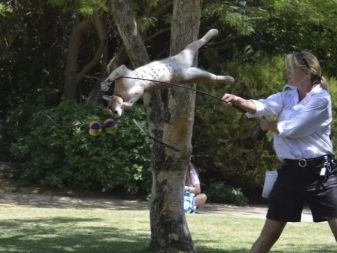

The animal plays in much the same way as dogs. At the same time, they are graceful, like representatives of the cat family. Caracals get along easily with other cats. It is difficult to imagine how they will communicate with dogs. But if a bird or a small rodent (hamster) already lives at home, then the predator's instincts will almost certainly work.
Desert lynx often becomes a source of problems in families with small children. Even if she is not too aggressive, she still often shows self-will and emphasized independence. In the most difficult situations, adults may not have time to pull the pet. This also applies to the most disciplined and trained individuals.
From a poorly trained and insufficiently familiar to a person caracal problems will be more.
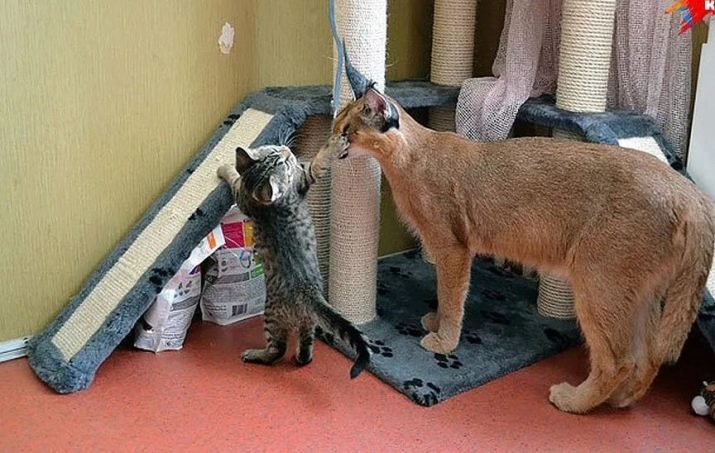
Admiring “red kittens” in an aviary or in a photograph and keeping them is not the same thing. An animal needs more free space. The minimum ceiling height should be 2.5 m. The area of the enclosed enclosure should be at least 15 square meters. m
Caracal can become a real destroyer of the house: it will not be difficult for him to arrange a terrible mess, break, break, turn over a lot of things. Those toys that will appeal to the domestic cat, its steppe fellow will not be to their taste. These things are too small. What exactly helps is toys designed for medium-sized dogs or for children.
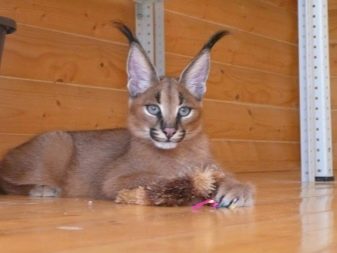

Food
From the very beginning, you should tune in to serious expenses. Users can choose different feeding schemes for caracal. But at the heart of them meat should always be featured. Raw chicken eggs are occasionally added to the diet. Some owners prefer purely “live” food.
Kids need quail and mouse. Adults should feed chickens, rats. In some cases, first-class cat foods are used. Among them are selected those that contain few cereals and other additives. But even in this case, such a diet can hardly be considered the best choice.
It is worth adding that caracal live food, albeit in a small amount, is required systematically - without it, the normal activity of the digestive system and microflora is unattainable. In the first 36 months of life, the steppe animal must certainly receive vitamins and trace elements.
Since predators in the wild eat unpredictably, feeding must be done at different times. In this case, there will be no temporary stereotype.
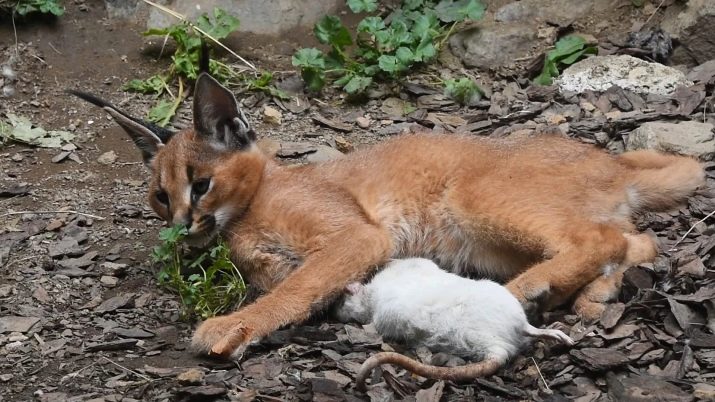
A wild animal, including after domestication, must at least experience a slight hunger from time to time. It is not just not harmful - the absence of this feeling is unnatural. The exact amount of food is determined by the mass and age of the caracal. We must proceed from the fact that every day the animal should eat from 3 to 5% of its own weight. When warm days arrive, caracal needs less food than in the cold.
Water must be provided without restrictions. Once every 10 days, an average unloading period is done. Then for a day the caracals need to give only water. Do not let them get food and water on their own.
From the first day, animals must get used to receiving food only from the owner.
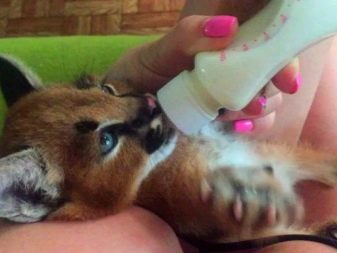
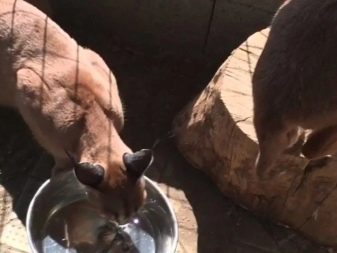
Karakalam meat should be given only low-fat varieties. Feed them raw sea fish should be a maximum of once a week. Fasting days can not be carried out for pregnant and lactating individuals. It is unacceptable to give something sweet and food from the table. Unacceptable feeding spicy, salty and spicy foods.
The following products are also prohibited:
- sausage;
- sausages and sausages;
- all types of smoked meat (regardless of the method of smoking).

Hygiene
The combing of the cat should occur approximately 1 time per week. She will tolerate swimming calmly, but the need for this procedure arises only with severe contamination of the coat. To remove claws on the forelimbs, they turn to nurseries - there they are quickly and painlessly cut off with a laser.
Removing claws at home is not recommended. The cat will react poorly to such a procedure. It is required to provide a clipper. A weekly examination of the ears and eyes of the animal. As needed, they are cleaned.
On how to contain caracal at home, see further.
